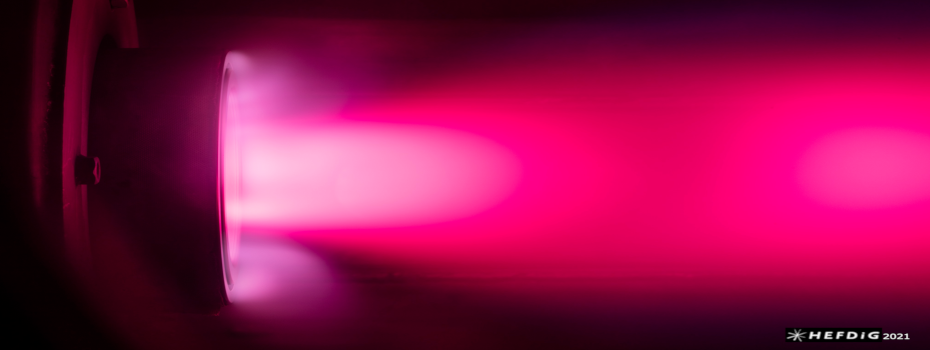Speaker
Description
ESTHER is a two stage shock-tube. It comprises a 1.6\metre\ length and 200\milli\metre\ diameter combustion driver where He/\ce{H2}/\ce{O2} and \ce{N2}/\ce{H2}/\ce{O2} mixtures are injected by an automated gas filling system at initial pressures up to 100 bars. These mixtures are ignited through a Nd:Yag laser shooting on the back plate through a thick sapphire window, reaching final pressures up to 600 bars for typical deflagrations (subsonic combustion). Occasionally, detonations (supersonic combustion) may occur, leading to higher transient pressures (up to 2.4\kilo\bbar\ reflected pressures). The combustion chamber is designed accounting for such maximum pressure requirements. It is manufactured from low carbon super-duplex steel which has high mechanical strength and is tolerant for \ce{H2} presence because of minimized adsorption.
An intermediary compression tube is connected to the combustion chamber through a diaphragm designed to burst at a predetermined pressure. The compression tube is filled with He gas at pressures of about 0.01-1\bbar. The shock-wave propagates in this section leading to transient reflected pressures of 70\bbar. The tube end sections are made in super-duplex stainless steel, while the middle sections are made in duplex stainless steel, which also has a low rate of Carbon, limiting adsorption. The compression tube section has an internal diameter of 130\milli\metre, and a length of about 6.5\metre.
The compression tube is connected to the shock-tube test section through a second diaphragm designed to burst at a predetermined pressure. The shock-tube is filled with a test gas at pressures of about 0.1 mbar. The shock-wave propagates in this section at velocities that can exceed 10\kilo\metre\per\second, leading to transient reflected pressures of no more than 20\bbar. The tube is manufactured in duplex stainless steel. The shock-tube section has an internal diameter of 80\milli\metre, and a length of about 5.9\metre. Pressure sensor stations are located at different stages of the shock-tube, detecting the rise of pressure in the wake of the shock-wave. This allows for developing a triggering system initiating high-speed (10-100MHz rated), time-dependent spectroscopic measurements at the test-section windows (25\milli\metre\ diameter) of the radiation emitted and absorbed in the wake of the shockwave.
A dump tank recovers all the gases flowing in the wake of the shock-wave. The H$_2$O liquid phase is drained off, while the remaining contaminated He mixture is evacuated by the pumping system, after which the shock-tube can be opened for cleaning operations and the replacement of the diaphragms.
Summary
The ESTHER shock tube is a new state-of-the-art facility at Instituto Superior Técnico for supporting support European planetary exploration missions. Its driver is a laser ignited high-pressure combustion chamber using He:H$_2$:O$_2$ mixtures. During the 99 qualification shots, the effects of air:fuel ratio, filling pressure, inert gas dilution and ignition mode in the combustion process were asessed.
Filling pressure and helium dilution are prominent in controlling the acoustic oscillation and combustion velocity. Increased pressure increases acoustic oscillation and lowers the velocity. Nitrogen diluted shots have drastically lower compression ratios, thus used for low velocity shock waves.
The combustion driver operational parameters were used as input for numerical performance simulations. These allowed computing the ESTHER performance envelope. the facility should conservatively be capable of producing shock wave velocities between 4 and 12.5 km/s.

